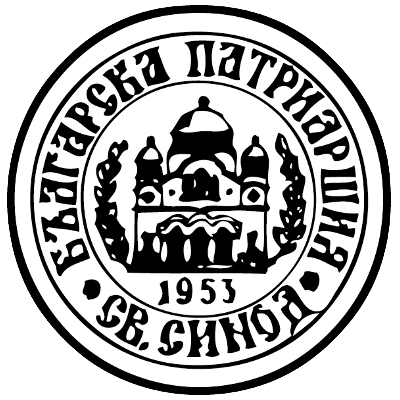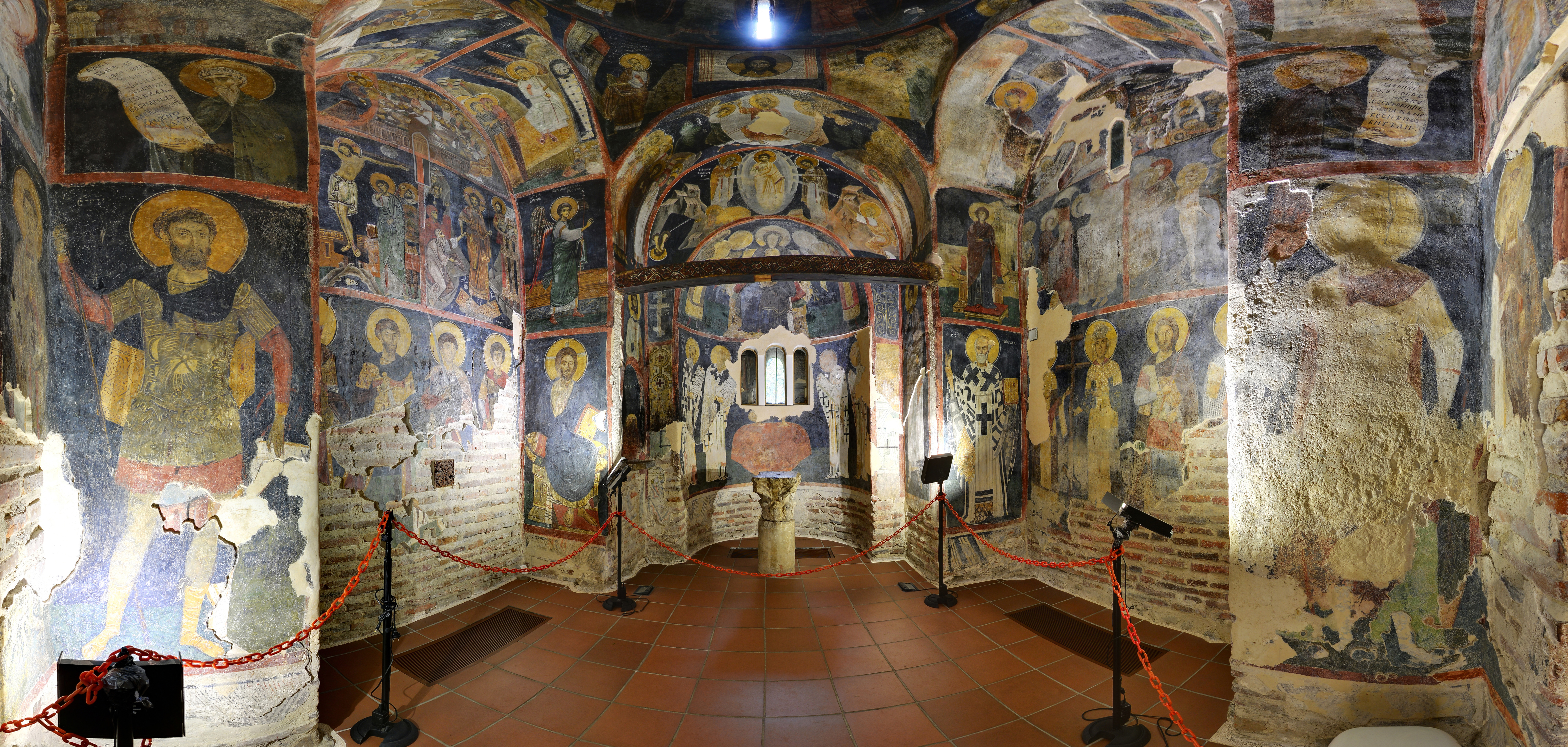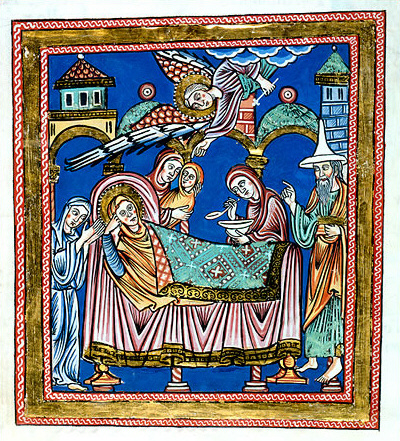|
Zemen Monastery
The Zemen Monastery ( bg, Земенски манастир, ''Zemenski manastir'') is a Bulgarian Orthodox monastery located one kilometre away from the town of Zemen, Pernik Province in western Bulgaria. The monastery was established in the 11th century. It comprises a church, belfry and two residential buildings. It is currently uninhabited. The church is a monument of culture. The church dates from the foundation of the monastery in the late 11th century and has a cube shape, 9 metres long, 8 metres wide, 11.20 metres high. The material used was travertine. The altar is a stone monolith and the floor is made of colourful tiles. The church is richly painted inside, with two layers of frescoes, the scarcely preserved early one dating to the 11th century. The better preserved Biblical scenes date from the mid-14th century and include several portraits of donors: the first one depicting an unnamed man, his wife Doya and their two children, the second featuring a young man, Vitomir ... [...More Info...] [...Related Items...] OR: [Wikipedia] [Google] [Baidu] |
Bulgarian Orthodox
The Bulgarian Orthodox Church ( bg, Българска православна църква, translit=Balgarska pravoslavna tsarkva), legally the Patriarchate of Bulgaria ( bg, Българска патриаршия, links=no, translit=Balgarska patriarshiya), is an autocephalous Orthodox jurisdiction. It is the oldest Slavic Orthodox church, with some 6 million members in Bulgaria and between 1.5 and 2 million members in a number of European countries, the Americas, Australia, New Zealand and Asia. It was recognized as autocephalous in 1945 by the Ecumenical Patriarchate of Constantinople. History Early Christianity The Bulgarian Orthodox Church has its origin in the flourishing Christian communities and churches set up in the Balkans as early as the first centuries of the Christian era. Christianity was brought to the Balkans by the apostles Paul and Andrew in the 1st century AD, when the first organised Christian communities were formed. By the beginning of the 4th ce ... [...More Info...] [...Related Items...] OR: [Wikipedia] [Google] [Baidu] |
Zemen
Zemen ( bg, Земен ) is a town in Pernik Province, western Bulgaria. Located near the Pchelina Reservoir on the banks of the Struma River, it is the administrative centre of Zemen Municipality. Geography Location Zemen is located in a mountainous region in southwestern Bulgaria. It is located 70 km from Sofia, almost halfway between Radomir and Kyustendil. It is located on both banks of the Struma River, in a small valley, which is a prelude to the Zemen Gorge, near the Pchelina Dam. Its old name is Belovo. The name Zemen was originally given only to the railway station built on his land, and in 1925 the village of Belovo was renamed the village of Zemen. The proponents of this name had in mind to revive and preserve the name of the medieval Zemlengrad, which existed not far from the place of the present city of Zemen in the gorge of Struma. Since 1974 Zemen has been declared a city and is now the territorial-administrative centre of the Zemen municipality of Pernik r ... [...More Info...] [...Related Items...] OR: [Wikipedia] [Google] [Baidu] |
Pernik Province
Pernik Province is a province in western Bulgaria, neighbouring Serbia. Its main city is Pernik, and other municipalities are Breznik, Kovachevtsi, Radomir, Tran, and Zemen. Population Pernik province had a population of 133,750 according to the 2011 census, of which were male and were female.Bulgarian National Statistical Institute - 2011 census /ref> /ref> [...More Info...] [...Related Items...] OR: [Wikipedia] [Google] [Baidu] |
Bulgaria
Bulgaria (; bg, България, Bǎlgariya), officially the Republic of Bulgaria,, ) is a country in Southeast Europe. It is situated on the eastern flank of the Balkans, and is bordered by Romania to the north, Serbia and North Macedonia to the west, Greece and Turkey to the south, and the Black Sea to the east. Bulgaria covers a territory of , and is the sixteenth-largest country in Europe. Sofia is the nation's capital and largest city; other major cities are Plovdiv, Varna and Burgas. One of the earliest societies in the lands of modern-day Bulgaria was the Neolithic Karanovo culture, which dates back to 6,500 BC. In the 6th to 3rd century BC the region was a battleground for ancient Thracians, Persians, Celts and Macedonians; stability came when the Roman Empire conquered the region in AD 45. After the Roman state splintered, tribal invasions in the region resumed. Around the 6th century, these territories were settled by the early Slavs. The Bulg ... [...More Info...] [...Related Items...] OR: [Wikipedia] [Google] [Baidu] |
Travertine
Travertine ( ) is a form of terrestrial limestone deposited around mineral springs, especially hot springs. It often has a fibrous or concentric appearance and exists in white, tan, cream-colored, and even rusty varieties. It is formed by a process of rapid precipitation of calcium carbonate, often at the mouth of a hot spring or in a limestone cave. In the latter, it can form stalactites, stalagmites, and other speleothems. It is frequently used in Italy and elsewhere as a building material. Similar (but softer and extremely porous) deposits formed from ambient-temperature water are known as tufa. Definition Travertine is a sedimentary rock formed by the chemical precipitation of calcium carbonate minerals from fresh water, typically in springs, rivers, and lakes; that is, from surface and ground waters. In the broadest sense, travertine includes deposits in both hot and cold springs, including the porous, spongy rock known as tufa, and also the cave features known as speleot ... [...More Info...] [...Related Items...] OR: [Wikipedia] [Google] [Baidu] |
Balkans
The Balkans ( ), also known as the Balkan Peninsula, is a geographical area in southeastern Europe with various geographical and historical definitions. The region takes its name from the Balkan Mountains that stretch throughout the whole of Bulgaria. The Balkan Peninsula is bordered by the Adriatic Sea in the northwest, the Ionian Sea in the southwest, the Aegean Sea in the south, the Turkish Straits in the east, and the Black Sea in the northeast. The northern border of the peninsula is variously defined. The highest point of the Balkans is Mount Musala, , in the Rila mountain range, Bulgaria. The concept of the Balkan Peninsula was created by the German geographer August Zeune in 1808, who mistakenly considered the Balkan Mountains the dominant mountain system of Southeast Europe spanning from the Adriatic Sea to the Black Sea. The term ''Balkan Peninsula'' was a synonym for Rumelia in the 19th century, the European provinces of the Ottoman Empire. It had a geop ... [...More Info...] [...Related Items...] OR: [Wikipedia] [Google] [Baidu] |
Boyana Church
The Boyana Church ( bg, Боянска църква, ''Boyanska tsărkva'') is a medieval Bulgarian Orthodox church situated on the outskirts of Sofia, the capital of Bulgaria, in the Boyana quarter. In 1979, the building was added to the UNESCO World Heritage List. The east wing of the two-story church was originally constructed in the late 10th or early 11th century, then the central wing was added in the 13th century under the Second Bulgarian Empire, the whole building being finished with a further expansion to the west in the middle of the 19th century. A total of 89 scenes with 240 human images are depicted on the walls of the church. History and architecture The Boyana Church was built in three stages: in the late 10th to early 11th, the mid-13th, and the mid-19th centuries. The oldest section (the eastern church) is a small one-apse cross-vaulted church with inbuilt cruciform supports. It was built in the late 10th or the early 11th century. The second section, whi ... [...More Info...] [...Related Items...] OR: [Wikipedia] [Google] [Baidu] |
Joachim
Joachim (; ''Yəhōyāqīm'', "he whom Yahweh has set up"; ; ) was, according to Christian tradition, the husband of Saint Anne and the father of Mary, the mother of Jesus. The story of Joachim and Anne first appears in the Biblical apocryphal Gospel of James. His feast day is 26 July, a date shared with Saint Anne. In Christian tradition The story of Joachim, his wife Anne (or Anna), and the miraculous birth of their child Mary, the mother of Jesus, was told for the first time in the 2nd-century apocryphal infancy-gospel the Gospel of James (also called Protoevangelium of James). Joachim was a rich and pious man, who regularly gave to the poor. However, Charles Souvay, writing in the ''Catholic Encyclopedia'', says that the idea that Joachim possessed large herds and flocks is doubtful. At the temple, Joachim's sacrifice was rejected, as the couple's childlessness was interpreted as a sign of divine displeasure. Joachim consequently withdrew to the desert, where he fasted and ... [...More Info...] [...Related Items...] OR: [Wikipedia] [Google] [Baidu] |
Saint Anne
According to Christian apocryphal and Islamic tradition, Saint Anne was the mother of Mary and the maternal grandmother of Jesus. Mary's mother is not named in the canonical gospels. In writing, Anne's name and that of her husband Joachim come only from New Testament apocrypha, of which the Gospel of James (written perhaps around 150) seems to be the earliest that mentions them. The mother of Mary is mentioned but not named in the Quran. Christian tradition The story is similar to that of Samuel, whose mother Hannah ( he, ''Ḥannāh'' "favour, grace"; etymologically the same name as Anne) had also been childless. The Immaculate Conception was eventually made dogma by the Catholic Church following an increased devotion to Anne in the 12th century. Dedications to Anne in Eastern Christianity occur as early as the 6th century. In the Eastern Orthodox tradition, Anne and Joachim are ascribed the title ''Ancestors of God'', and both the Nativity of Mary and the Presenta ... [...More Info...] [...Related Items...] OR: [Wikipedia] [Google] [Baidu] |
Christian Monasteries Established In The 11th Century
Christians () are people who follow or adhere to Christianity, a monotheistic Abrahamic religion based on the life and teachings of Jesus Christ. The words ''Christ'' and ''Christian'' derive from the Koine Greek title ''Christós'' (Χριστός), a translation of the Biblical Hebrew term '' mashiach'' (מָשִׁיחַ) (usually rendered as ''messiah'' in English). While there are diverse interpretations of Christianity which sometimes conflict, they are united in believing that Jesus has a unique significance. The term ''Christian'' used as an adjective is descriptive of anything associated with Christianity or Christian churches, or in a proverbial sense "all that is noble, and good, and Christ-like." It does not have a meaning of 'of Christ' or 'related or pertaining to Christ'. According to a 2011 Pew Research Center survey, there were 2.2 billion Christians around the world in 2010, up from about 600 million in 1910. Today, about 37% of all Christians live in the ... [...More Info...] [...Related Items...] OR: [Wikipedia] [Google] [Baidu] |
Christian Monasteries In Bulgaria
Christians () are people who follow or adhere to Christianity, a monotheistic Abrahamic religion based on the life and teachings of Jesus Christ. The words ''Christ'' and ''Christian'' derive from the Koine Greek title ''Christós'' (Χριστός), a translation of the Biblical Hebrew term '' mashiach'' (מָשִׁיחַ) (usually rendered as ''messiah'' in English). While there are diverse interpretations of Christianity which sometimes conflict, they are united in believing that Jesus has a unique significance. The term ''Christian'' used as an adjective is descriptive of anything associated with Christianity or Christian churches, or in a proverbial sense "all that is noble, and good, and Christ-like." It does not have a meaning of 'of Christ' or 'related or pertaining to Christ'. According to a 2011 Pew Research Center survey, there were 2.2 billion Christians around the world in 2010, up from about 600 million in 1910. Today, about 37% of all Christians live in the A ... [...More Info...] [...Related Items...] OR: [Wikipedia] [Google] [Baidu] |




